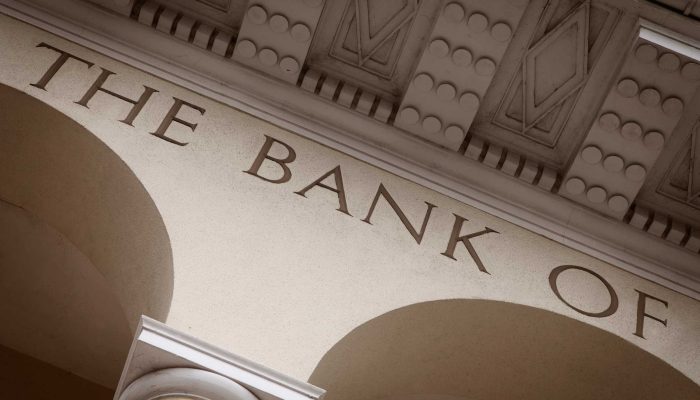The Banks: How The Six Largest US Financial Holding Companies Make Money

Posted May 27, 2015
This week Macro Watch takes a close look at the six largest US Financial Holding Companies: JPMorgan Chase, Bank of America, Citigroup, Wells Fargo, Goldman Sachs and Morgan Stanley.
In 2014, these six institutions held $9.9 trillion in assets, earned $64 billion in profits and employed more than 1 million people. They also paid a record $33 billion in legal settlements related to a series of financial scandals. Nevertheless, at year-end, their market value exceeded $1 trillion.
In this video we examine their income statements and balance sheets to learn how they make their money. How much do they earn from lending? How much from investing? And how will their profits be impacted by The Volcker Rule – which bans proprietary trading – when it takes effect this July?
Have they become less risky in the years following their near-systemic collapse in 2008? Should we be concerned that their over-the-counter derivatives activity is measured in hundred of TRILLIONS of dollars? How will they be impacted by reforms designed to force all standardized derivatives to trade through exchanges? Which of these banks were involved in the LIBOR and Foreign Exchange manipulation scandals? How are their share prices performing?
Finally, what about bank regulation? Is the government regulating the banks or – as many believe – are the banks regulating the government?
These are some of the questions considered in this crash course on the six institutions that dominate American finance.
If you are a Macro Watch member, log in now and watch “The Banks”.
If you have not yet joined, click on the following link:
http://richardduncaneconomics.com/product/macro-watch/
For a 50% subscription discount worth US$250, hit the “Sign Up Now” tab and, when prompted, use the coupon code: banks
You will find more than 15 hours of Macro Watch videos available to watch immediately. A new video will be added approximately every two weeks.


Richard, Your mysterious ending in the video is thought provoking, to say the least! There are so many possibilities that my head is spinning.
If commercial banks are historically split approx. 50%/50% between interest income and non-interest (investment ?) income, why is Wells Fargo’ share price 41% above the peak while Citi and BofA are down 90% and 70%, respectively? I also note that BofA and Citi got wacked the hardest by regulatory fines (legal settlements) while Wells Fargo had almost zero regulatory fines. Why? The only thing I can think of would be that “regulatory capture” has targeted BofA and Citi and is leaving Wells Fargo alone for some reason (maybe just for “cover”?).
Also, how will the commercial banks survive after July 15th when the Volker Rule bans proprietory trading which appears to be much more profitable than chasing a dwindling supply of interest income?
Does at least part of the answer lie in the possible immediate implementation of negative interest rates on all demand accounts combined with some form of capital controls to try and prevent a run on the banks.
Also, could a possible “bail-in” situation similar to Cyprus be lurking in the near future as well?
Is cash or currency as we know it under attack, particularly in light of a possible liquidity crisis? If so, to what end?
I’m just thinking outloud and feel a bit lost. Richard (or anyone else smarter than me), can you help by letting me know if I am at least on the right track or if I am way off the mark.
Thanks. -James
Maybe I’ll ask for Macrowatch for my birthday. It’s certainly cheaper than Grant’s Interest Rate Observer.
Any happy customers out there?
(I’ve read all of Richard’s books, Dollar Crisis when it first came out)
It is interesting to see that the government has the laws in place,but has not brought the regulatory framework up to speed.Also there doesn’t seem to be the will to push for a global regulatory strategy ,as was talked about by Gordon Brown when there was a meeting at the time of the crisis in USA (can’t remember where).i think it’s a attempt to project a long term strategy,with the option of a short term strategy when required.
Hi Richard,
I am a little confused as to what your conclusions are on the issue of “regulatory capture”. Can you state your position?
Two things are of interest to me: first are the six banks and others generally in the US, using their profits to write off impaired assets from the 2008 crisis? Assets such as securitized loans in all their forms and other non-performing assets?
Secondly, are the changes such as the Volcker rule reducing systemic risk to the US and global economy (ie: reducing the need for governments to bail out the financial industry) in the event of a second and much larger credit crisis down the road? That appears to be the game plan according to an Economist Cover story a few months ago where they indicated a plan to have private banks and capital pools take over the lending function from main-stream banks (since the main stream banks are highly leveraged and it only takes about a 10% or less of a capital wipe-out to bankrupt the entire bank and\or financial system). The theory is that the private lending pools would not be leveraged and therefore more stable during a crisis.
Your thoughts and comments would be appreciated.
Thanks, Jack D.